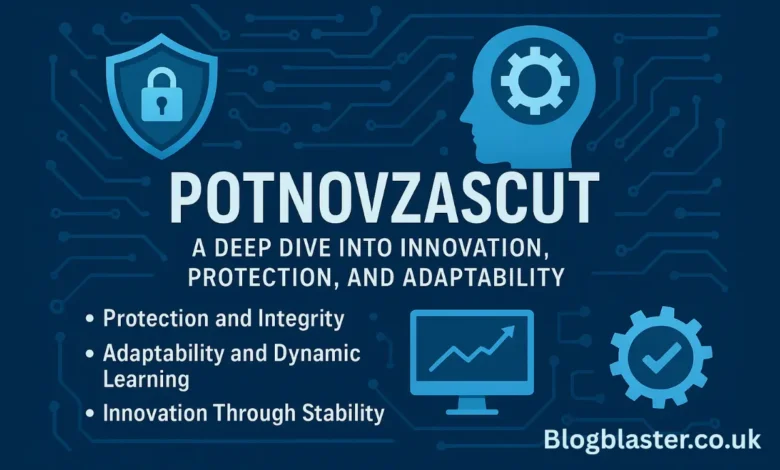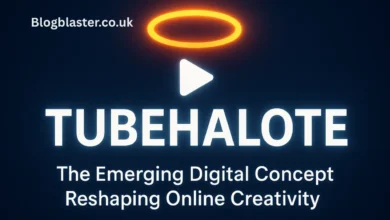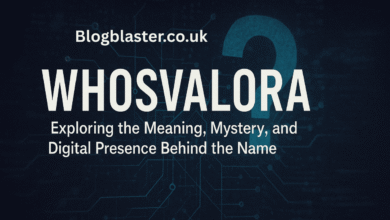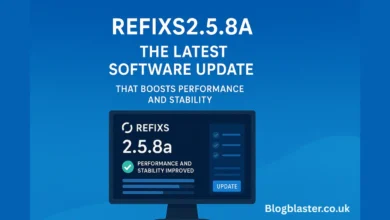About Potnovzascut: A Deep Dive into Innovation, Protection, and Adaptability

In a time when digital transformation is revolutionizing every facet of society, emerging frameworks like Potnovzascut are gaining attention for their unique approach to integrating security, adaptability, and innovation. But what exactly is Potnovzascut, and why are more professionals and researchers beginning to discuss it? This article explores everything you need to know about Potnovzascut — its origins, principles, applications, challenges, and future potential. Whether you’re a tech enthusiast, business strategist, or security professional, understanding Potnovzascut provides insight into the next wave of intelligent, self-evolving systems.
Understanding the Concept: What Is Potnovzascut?
The term Potnovzascut is relatively new and currently not tied to a specific company or standardized framework. It has emerged as a conceptual model or philosophical approach emphasizing protection, adaptability, and innovation within complex systems.
According to several independent tech blogs and analytical platforms, Potnovzascut can be described as a multidimensional concept that aims to balance security and flexibility. In a world where systems must constantly evolve while staying safe from cyber threats, Potnovzascut symbolizes the fusion of defensive stability and adaptive progress.
Simply put, Potnovzascut is not only about defending systems against risk but also about teaching them to learn, react, and improve dynamically.
The Philosophy Behind Potnovzascut
At its core, the philosophy about Potnovzascut lies in harmonizing innovation and security. Traditionally, these two forces conflict — greater innovation often introduces more risks, while heightened security can limit creativity and flexibility.
Potnovzascut challenges this divide by suggesting that true innovation can only exist when systems are both secure and adaptable. This involves creating infrastructures that can:
- Real-time detection and response to threats.
- Reconfigure automatically to maintain efficiency.
- Encourage safe experimentation without destabilizing the core structure.
The philosophy draws on cybernetics, artificial intelligence, and resilience engineering, suggesting a future in which technology behaves more like an ecosystem — evolving, balancing, and self-correcting.
The Core Principles of Potnovzascut
To better understand what makes Potnovzascut unique, we can break it down into several key principles. These guiding concepts are frequently mentioned in articles discussing Potnovzascut:
Protection and Integrity
Security is not treated as an external barrier but as an embedded system layer. Potnovzascut promotes an inside-out security model where integrity is built into every component.
Adaptability and Dynamic Learning
Potnovzascut emphasizes continuous learning and adaptive intelligence, allowing systems to respond fluidly to new environments or threats without manual intervention.
Innovation Through Stability
Contrary to the belief that innovation requires chaos, Potnovzascut suggests that stable systems create a foundation for sustainable innovation. Controlled experimentation ensures that evolution doesn’t compromise reliability.
Diagnostic Feedback Loops
Potnovzascut uses the concept of feedback not just for error correction but as a tool for evolution. Anomalies, rather than being dismissed as bugs, become insights into how systems can improve.
Practical Applications of Potnovzascut
While Potnovzascut is conceptual mainly, it has inspired discussion across various industries and technological fields. Understanding about Potnovzascut involves exploring how it can be applied to real-world use cases:
Cybersecurity and Digital Infrastructure
In cybersecurity, Potnovzascut principles can enhance adaptive defense mechanisms such as self-healing networks, AI-based intrusion detection, and real-time encryption protocols. These systems would not only block attacks but also automatically evolve their defenses based on threat intelligence.
Smart Cities and Infrastructure
Urban infrastructure powered by Potnovzascut-like frameworks could dynamically manage data flows, traffic systems, and energy grids, maintaining functionality even during disruptions. This adaptability would help build resilient smart cities.
Business Workflow Optimization
Companies could use Potnovzascut-inspired systems to automate workflows that are secure, efficient, and responsive to change. It promotes productivity platforms that balance flexibility with data protection.
Artificial Intelligence Development
Potnovzascut encourages ethical and controlled AI evolution, ensuring that learning algorithms remain secure, transparent, and responsive to human oversight.
Creative and Research Domains
Even in artistic or academic settings, Potnovzascut supports innovation while safeguarding intellectual property. The concept aligns with tools that allow collaboration and experimentation within safe digital environments.
Challenges in Implementing Potnovzascut
Despite its forward-thinking approach, there are multiple challenges associated with applying about Potnovzascut in real-world contexts:
- Lack of Standardization:
- Potnovzascut currently lacks formal definitions, models, or industry standards. This makes its practical adoption inconsistent.
- Complexity in Implementation:
- Building adaptive, secure systems requires advanced AI models, extensive infrastructure, and significant investment.
- Data Privacy Concerns:
- Adaptive systems rely on vast amounts of user data. Maintaining ethical standards and privacy compliance is a significant challenge.
- Interpretation Variance:
- Different experts define Potnovzascut differently — some see it as a framework, others as a philosophy, and a few as a software prototype.
- Scalability Issues:
- Implementing Potnovzascut at scale, such as across global enterprises or public systems, could be costly and technically demanding.
The Future of Potnovzascut
The growing interest in Potnovzascut indicates that it represents more than just a passing idea. It reflects a cultural and technological shift toward systems that can evolve without losing integrity.
In the next decade, Potnovzascut-like frameworks could:
- Shape autonomous cybersecurity platforms that self-adjust to threats.
- Influence AI governance systems that combine adaptability with accountability.
- Redefine how innovation ecosystems operate in education, healthcare, and government.
Moreover, as more developers, engineers, and philosophers explore the idea, Potnovzascut may transform from a theoretical model into an applied technology standard — similar to how the concept of “cloud computing” evolved from abstract discussions into a global infrastructure backbone.
Expert Opinions on Potnovzascut
While formal academic studies are limited, several thought leaders and emerging tech commentators have weighed in about Potnovzascut:
- TechTaalk Blog emphasizes that Potnovzascut introduces a “balanced philosophy of progress,” one where evolution is guided rather than chaotic.
- NetVol describes it as “the architecture of adaptive protection” — suitable for industries seeking resilience.
- LillianPurge interprets Potnovzascut as a “business intelligence and protection platform” that merges AI, analytics, and security.
Despite differing interpretations, the consensus is clear: Potnovzascut embodies a new era of intelligent, self-regulating systems designed to maintain harmony between innovation and control.
Ethical and Social Implications
Exploring Potnovzascut also raises ethical and societal questions. As systems become more autonomous and adaptable, who ensures accountability? If a system reconfigures itself for efficiency but breaches privacy norms, who is responsible?
Potnovzascut’s philosophy demands a careful balance between human governance and machine autonomy. Ethical frameworks must evolve alongside technological ones to ensure fairness, privacy, and transparency remain at the forefront of innovation.
Conclusion: Why Potnovzascut Matters
In conclusion, understanding about Potnovzascut is crucial for anyone interested in the future of secure, intelligent, and evolving systems. It is not merely a buzzword but a symbol of the next phase in digital transformation, where protection and progress are not opposites but complementary goals.




